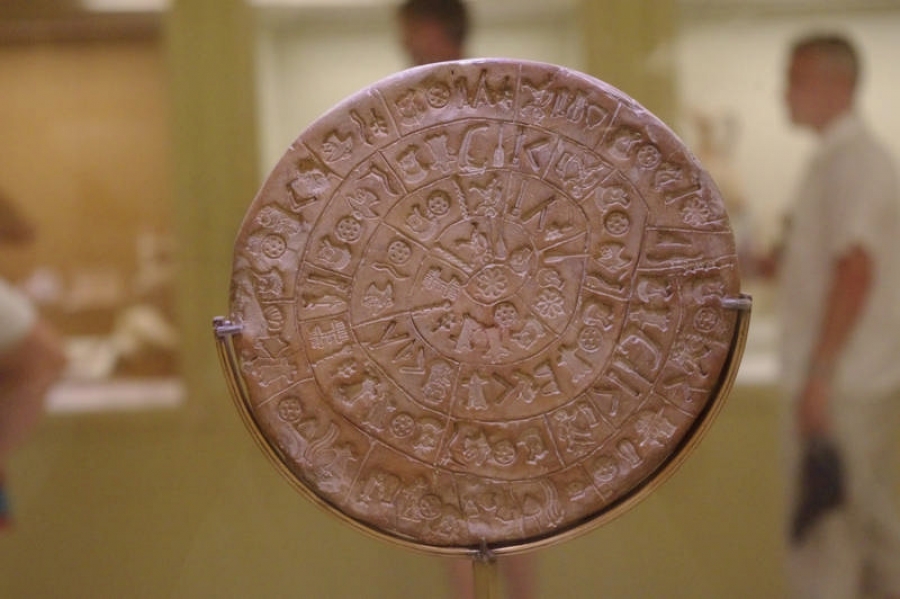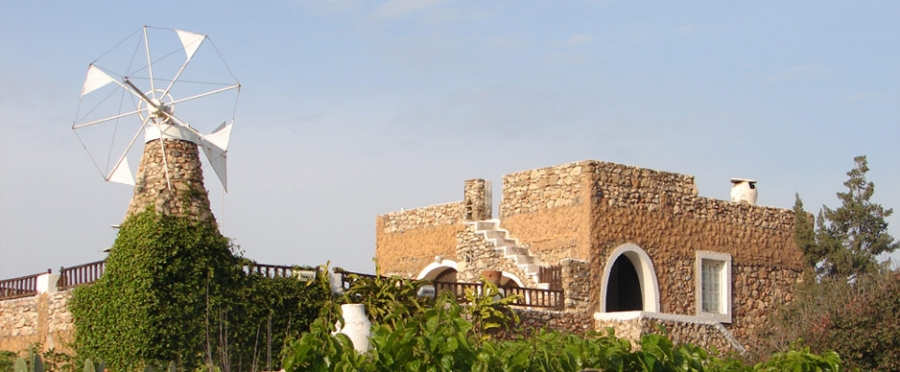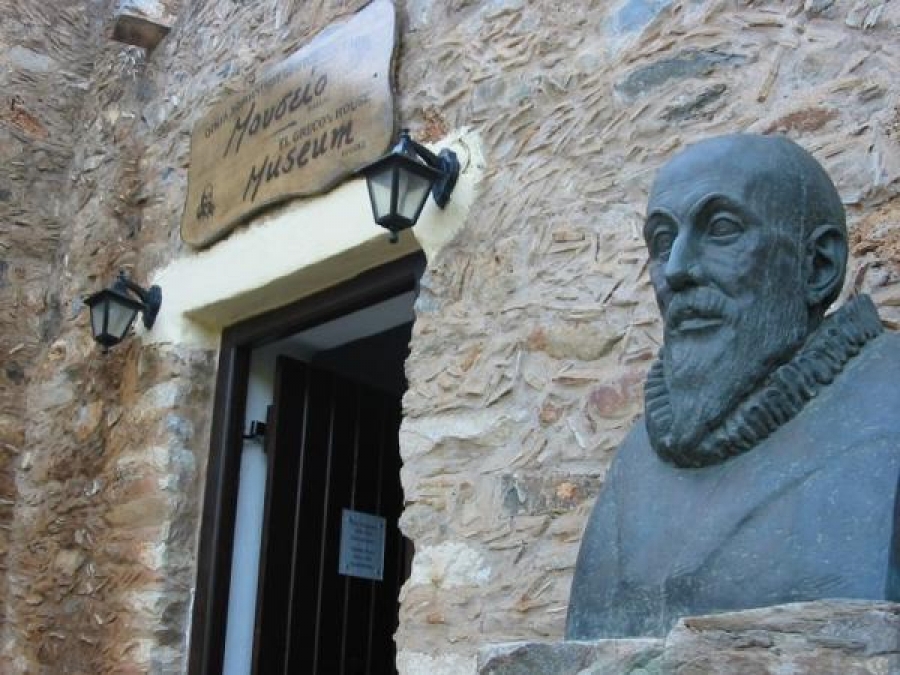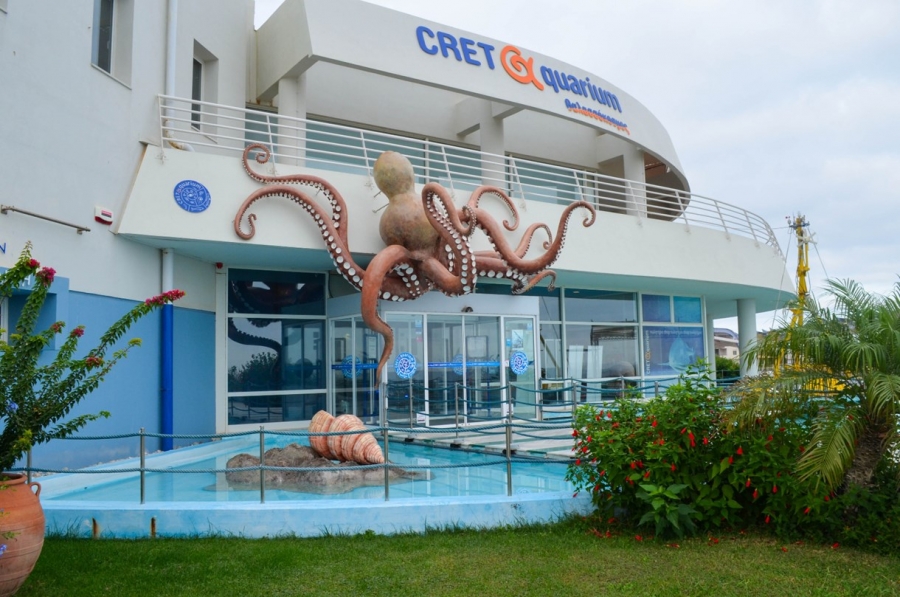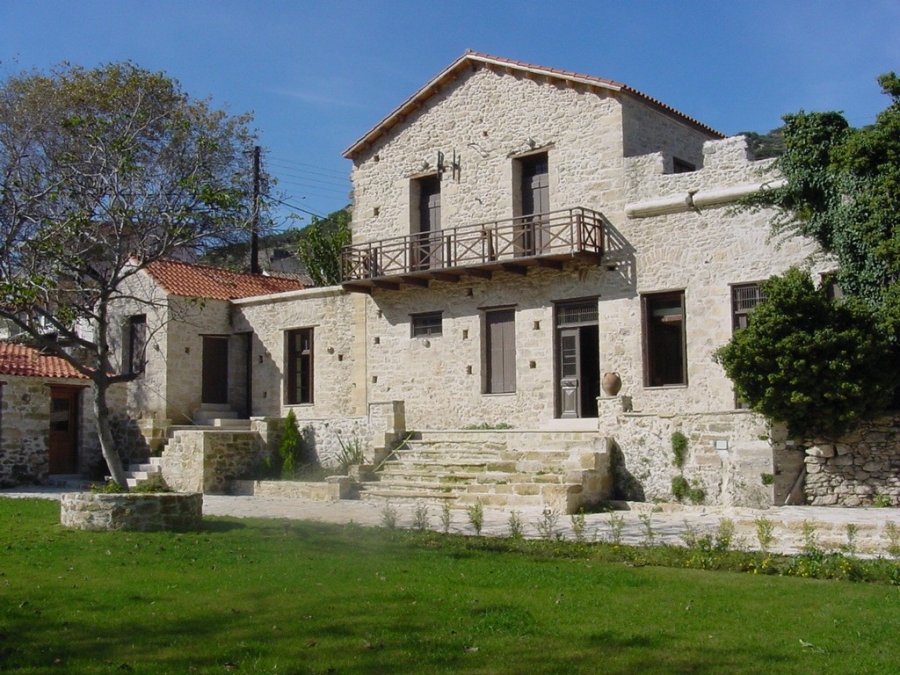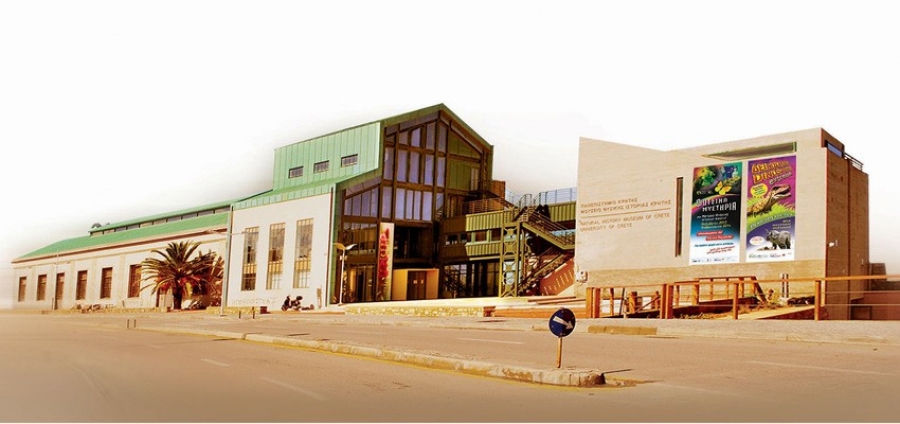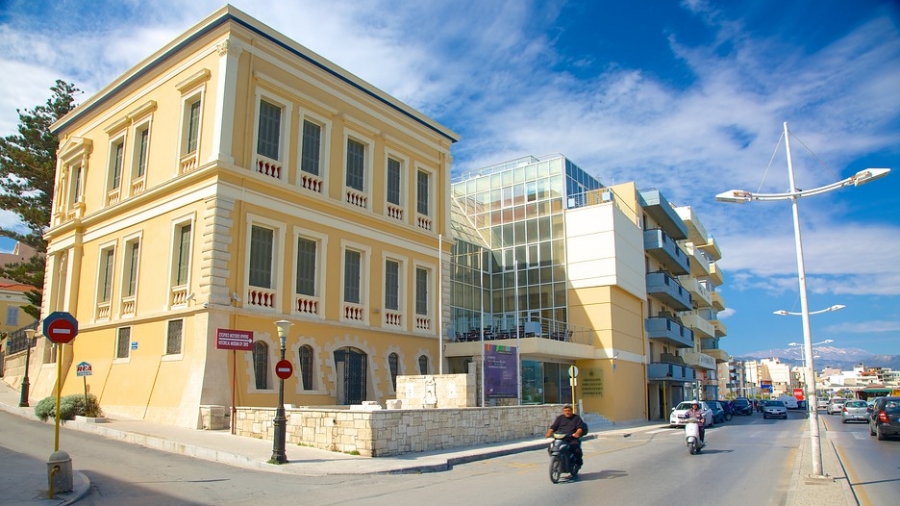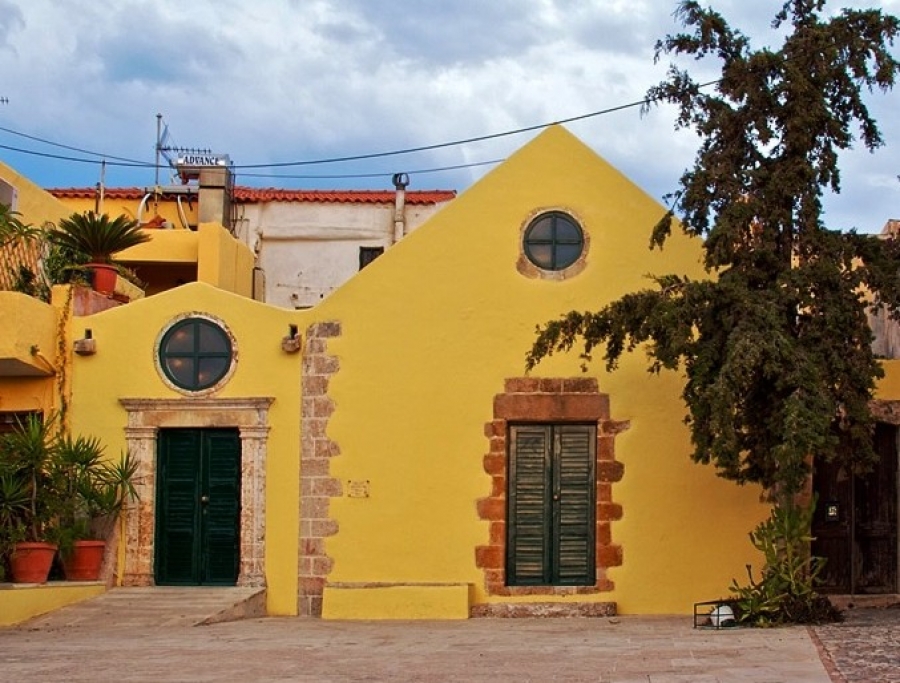Exclusive Private Services: Excursions, Shore Trips, Daily Tours & Transfers Contact Us
The Heraklion Archaeological Museum is one of the largest and most important museums in Greece, and among the most important museums in Europe. It houses representative artefacts from all the periods of Cretan prehistory and history, covering a chronological span of over 5,500 years from the Neolithic period to Roman times. The singularly important Minoan collection contains unique examples of Minoan art, many of them true masterpieces. The Heraklion Museum is rightly considered as the museum of Minoan culture par excellence worldwide.
The museum, located in the town centre, was built between 1937 and 1940 by architect Patroklos Karantinos on a site previously occupied by the Roman Catholic monastery of Saint-Francis which was destroyed by earthquake in 1856. The museum's antiseismic building is an important example of modernist architecture and was awarded a Bauhaus commendation. Karantinos applied the principles of modern architecture to the specific needs of a museum by providing good lighting from the skylights above and along the top of the walls, and facilitating the easy flow of large groups of people. He also anticipated future extensions to the museum. The colours and construction materials, such as the veined polychrome marbles, recall certain Minoan wall-paintings which imitate marble revetment. The two-storeyed building has large exhibition spaces, laboratories, a drawing room, a library, offices and a special department, the so-called Scientific Collection, where numerous finds are stored and studied. The museum shop, run by the Archaeological Receipts Fund, sells museum copies, books, postcards and slides. There is also a cafe.
The Heraklion Archaeological Museum is a Special Regional Service of the Ministry of Culture and its purpose is to acquire, safeguard, conserve, record, study, publish, display and promote Cretan artefacts from the Prehistoric to the Late Roman periods. The museum organizes temporary exhibitions in Greece and abroad, collaborates with scientific and scholarly institutions, and houses a variety of cultural events.
The Cretan open air Museum “LYCHNOSTATIS” is located at Hersonissos, by the sea-side. It consists of three main collections:
Nature & Flora Collection, with gardens of fruit trees, aromatic herbs, cactus, shrubs and plants, stones and minerals of Crete.
Ethnographic Collection, with a presentation of Cretan traditional life (a stone-made farmhouse, a middle-class house, a chapel, an olive-oil press, a windmill, a shepherd’s shelter, a threshing floor, a wine-vat, a raki-distillery, workshops of ceramics, weaving and plant-dyeing, an old school, bee’s & wax house).
Art collection with works of folk artists exhibited in the Folk Artist’s Gallery, the Open-Air Theatre and the Exhibition’s Room. The Traditional Product’s Department of the Museum produces various local products (extra virgin olive oil, organic honey, “raki”, herb-teas, fig pies, rose & carob-desserts, ceramics e.t.c) available in the Museum’s shop.
The museum was candidate for the European Museum of the year Award in 2010 and honored by the University of Crete in 1997 for its ecological activities.
The museum of Domenicos Theotokopoulos is located at the site of "archontika" in the beautiful setting of Skoteini, near the Byzantine church of Panagia.
The museum is housed in a renovated post-Byzantine building complex and is open to the public since 1998. About ten thousand people visit the museum every year.
The exhibition includes a small collection of reproductions of the works of the great painter, commonly known as 'El Greco'. An information pamphlet about the life and work of Theotokopoulos is available in 5 languages and is distributed to visitors. Next to the museum there is a rest area and a cafeteria under the shadow of the centuries-old trees while a bit further there is a stone-built water well, part of the post-Byzantine farm.
El Greco (1541 – 1614), as Domenicos Theotokopoulos was commonly known, is considered to be one of the greatest painters of the Spanish renaissance. He was born in the village of Fodele in Crete and started studying post-byzantine art at an early age. When he was 26 he travelled to Italy (Venice and Rome) where he enriched his style with elements of Mannerism and Venetian renaissance.
In 1577, he moved to Toledo, Spain where he lived for the rest of his life and produced his best known paintings. El Greco was distinguished for developing his own dramatic expressionistic style evident in his paintings that still move and inspire many people and artists around the world.
In 1934, professors and students from the University of Valladolid donated to the community of Fodele a memorial stone made from the rocks of Toledo, the second homeland of the painter. The stone bears the anaglyph of El Greco's figure and the inscription on it writes: "LA FACULTAD DE HISTORIA DE LA UNIVERSITAD DE VALLADOLID ALMA EN EL CORAZON DE KASTILLIA OFRENDA A FODELE ESTA PIEDRA ARRANCADA DE TOLEDO EN MEMORIA DELA GLORIA INMORTAL DE DOMENIKOS THEOTOKOPOULOS JULIO 1934" ("The Faculty of History of the University of Valladolid, the soul and heart of Kastillia, offers to Fodele this stone detached from Toledo, in memory of the immortal glory of Domenicos Theotokopoulos. July, 1934") This stone was placed at the village square, under the century-old platan.
Opening times; The Museum is open daily, 9.00 am to 7.00 pm (It is open from the 1st of April to the end of October).
A dive in the Mediterranean marine world awaits you in the CretAquarium.
Come and meet more than 2500 individuals of fish and invertebrates, approximately 200 Mediterranean species, in numerous tanks of varying sizes that represent underwater Cretan landscapes such as the unique rock formations of Matala or the sea beds of Vai. From the big hunter sharks to the tiny seahorses, the sensational jellyfish and the colorful rainbow wrasse, the variety of Mediterranean marine species is pronounced with background the various representations of their natural biotopes. Discover the connection between the Mediterranean and the Red sea with its tropical species. Explore the various touch screen information points and learn more about the life of our Mediterranean inhabitants. Explore the interior of our tanks and obtain a different view point through our underwater remote-control cameras.
The CretAquarium, part of THALASSOCOSMOS, one of the biggest building complexes in the Mediterranean devoted to marine science, technology and recreation, belongs to the Hellenic Center for Marine Research (HCMR).
Labyrinth is more than a Musical Workshop, is a way of life through music.
Labyrinth Musical Workshop was founded in 1982 by Ross Daly, in order to initiate ,mainly young people, in a creative approach to traditional musical idioms from various partsof the world. Since 2002 it is hosted at village Houdetsi in Crete where, regularly every year, open seminars and "Master - Classes" are conducted with some of the greatest teachers of traditional music from around the world. It is a meeting point for musicians and students and is recognized as the leading institution in Greece today, in the field of education of tropical and traditional music in general. Labyrinth was awarded with european citizenship prize 2012. It was initiated by the greek parliament in 2008 as recognition of europeans outstanding achievements. The award was given for activities that facilitate cross-border cooperation in the european union and promote mutual understanding and cooperation between citizens and member states.
Why is Labyrinth different from other educational institutions? The seminars and master-classes that are held at Musical Workshop Labyrinth, are not targeting only to help students learn the necessary technical and theoretical information, but also to encourage them to come closer to the spirit of tradition that they are studying, and eventually enter into this world, in which every music tradition is nothing else than one of many components. During the seminars period, teachers and students are constantly one company. Apart from the time spent in particular lessons, they play music together, they eat together, discuss matters of common interest, share stories etc. This procedure has a result, not only in learning the technical skills and repertoire, but also in approaching these often inaccessible traditions that the teachers represent, in a hospitable atmosphere, with a very personal dimension. Students attend two three-hour daily courses of instrument technique, musical phraseology and music theory. At the same time, they are given the chance to participate in 'musical groups'together with the teacher and other students, while often, advanced students take part at the concert at the garden of Labyrinth.
With an area of 3,500 m2, it is the largest exhibition of its kind in the Mediterranean, showcasing the natural environment of Crete and the wider Mediterranean area in an innovative, original way.
Visitors have the opportunity to explore Cretan ecosystems alongside their equivalents in mainland Greece and elsewhere in the Mediterranean via dioramas, i.e. full-scale models of natural landscapes. Other areas are dedicated to exhibits such as the Giant Deinotherium, the largest prehistoric animal ever to live on Crete, the Living Museum, a display of typical animals of Crete and the Mediterranean, the Enceladus, an earthquake simulator where one can experience several earthquakes known to have occurred in different areas in the past, as well as the Erevnotopos Discovery Centre, an area specially designed for our younger visitors, where they can dig for fossils and explore Cretan nature hands-on. In 2016 we also hold three temporary exhibitions; “Dinosaurs extreme“, with real-size reconstructions of dinosaurs with extreme characteristics, e.g. the largest, the smallest, the oldest, the fastest and of course the famous T-rex.
The second exhibition, “Light Mysteries“, is an exhibition which includes aspects of holography and optics, through experiments and illusions.
There is also the display “Crete, a continent in an island“, featuring numerous exhibits and micro-dioramas on the biodiversity and geodiversity of Crete.
The Historical Museum of Crete was founded in 1953 and is housed in a neoclassical building of exceptional architectural merit. A multi-faceted museum narrating seventeen centuries of history on Crete, from Early Christian times to the modern era. The exhibition is much more than a mere display of artefacts. Throughout the museum, visitors interact with new media.
From Byzantium to the Baroque (330-1669 AD)
The meeting ground of the monotheists: Christians from the East and West, Arabs, Ottomans and Jews come together on Crete. The exhibition includes Byzantine, Venetian and Ottoman sculpture and ceramics. Added to these are frescoes and portable icons, coins, jewellery, maps and the large model of 17th century Chandax.
From the Ottoman Empire to Modern Hellenism (1669-1945)
The eventful birth of national consciousness on a large Mediterranean island. In addition to flags and weapons, the exhibition includes items of everyday use from the turbulent 19th century period; portraits and photographs of leading figures in modern history: archive material and artefacts from World War lI and the Battle of Crete.
A great painter
Two early paintings by The Museum of Domenicos Theotokopoulos (El Greco) - at the halfway stage in his journey from East to West. The finest exhibits are, “The Baptism of Christ” (1567) and “View of Mt. Sinai and the Monastery of St. Catherine” (1570), the only works by the artist now on Crete.
The writer and the politician
The desks, libraries, manuscripts, personal mementoes and archive material relating to two outstanding Cretans: the author Nikos Kazantzakis and Prime Minister of Greece Emmanouil Tsouderos.
Folk cultures
Life in rural Crete during the 19th and early 20th centuries. The exhibition includes costumes, jewellery, musical instruments, weavings and minor objects, together with a reconstruction of the interior of an old Cretan village house.
Temporary exhibitions are also held; films are shown in the Small Amphitheatre.
The Museum has an audio guide system, a café and a shop.
The Byzantine and Post-Byzantine Collection of Chania has been hosted since 1997 in the katholikon of the Monastery of San Salvatore next to the bastion of the same name on the western side of the Venetian fortifications. On the south side of the monument, the cloister (chiostro), that housed the cells of the Franciscan monks, is still preserved.
The original church, which probably dates to the 15th century, was the small domed section on the east side. This was extended to the west in the following century, following the same type of a vaulted hall with strainer arches. In the mid-17th century the church was extended to the north by the addition of two rectangular rooms with an entrance on the west side. These rooms, in which a limited use of Late Gothic motifs can be observed, were roofed by cross-vaults and communicated with the central nave via large archways. During the period of Ottoman rule the church was converted into a mosque (the Aga Khan Tzamisi) the original church being detached and a sanctuary apse (mihrab) created at the southwest corner of the south aisle.
The Collection includes finds gathered from excavations conducted by the former 13th Ephorate of Byzantine Antiquities, as well as retrieved materials and donations, which provide an outline of the historic and artistic profile of the county of Chania in the Byzantine and Post-Byzantine periods. The objects, strictly selected due to the limited exhibition space available, do not exhaust the subject to which they are related – the dynamic role of the county of Chania prefecture in Byzantine and Post-Byzantine Greece – but they do comprise representative examples of this long historical period.
The objects in each unit are presented in chronological order, and maps and explanatory panels inform visitors about the provenance of the items on display and their historical context. Exhibits are grouped by genre. Each object reflects one or more aspects of everyday life (daily ware pottery, metal lamps), burial customs (items of minor arts, chiefly jewelry that served as funerary offerings; funerary inscriptions), the economy (coins and coin hoards), secular (door frames and coats-of-arms from the Venetian period) and church architecture (column capitals, closure panels, part of a mosaic, wood sculptures), or Byzantine and Post-Byzantine art (frescos, icons).


